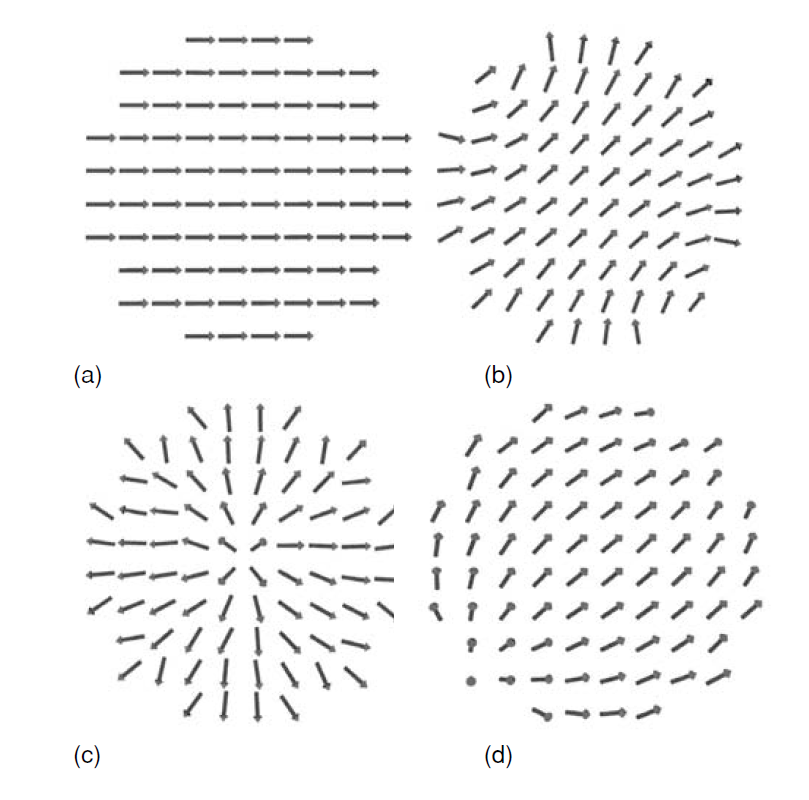
Small particles
 المؤلف:
J. M. D. COEY
المؤلف:
J. M. D. COEY
 المصدر:
Magnetism and Magnetic Materials
المصدر:
Magnetism and Magnetic Materials
 الجزء والصفحة:
295
الجزء والصفحة:
295
 1-3-2021
1-3-2021
 2221
2221
Small particles
Small ferrimagnetic particles appear naturally in igneous rocks, and ferromagnetic and ferrimagnetic particles can be synthesized by a variety of chemical methods. The smallest magnetic particles exhibit superparamagnetism, behaving like paramagnetic macrospins. Larger ones adopt magnetic configurations which are governed by the balance of anisotropy, exchange and magnetic dipole interactions. Submicrometre spots of magnetic materials can be patterned from thin films. When magnetocrystalline anisotropy is negligible, the small elements tend to adopt configurations where the magnetization is oriented as far as possible parallel to the surface. They can do this because the exchange length, which is the length scale over which the direction of magnetization of a ferromagnet can adapt to dipolar fields, is only 2–5 nanometres. Vortex configurations are found in thin-film spots of soft magnetic material of order 100 nm in size, as well as the C and S configurations.
Surface anisotropy can also influence the magnetic configurations of ferromagnetic nanoparticles, when the exchange is not too strong. Some examples are shown in Fig. 1. These effects are unimportant in nanoparticles of 3d metals and alloys with Curie points above room temperature, but they may be significant for rare-earth alloys with low Curie points, or actinide ferromagnets like US, where the single-ion anisotropy is exceptionally strong.

Figure 1: Some magnetic configurations in ferromagnetic nanoparticles with: (a) no surface anisortopy, (b) and (c) perpendicular surface anisotropy of increasing strength and (d) in-plane surface anisotropy
The spin configurations shown in Fig. 1 were determined numerically, by atomic scale Monte-Carlo simulations with simulated annealing from above the Curie point in order to find the lowest-energy state. The spin configurations have names: (b) is a throttled or flower state, (c) is a hedgehog and (d) is an artichoke.
 الاكثر قراءة في المغناطيسية
الاكثر قراءة في المغناطيسية
 اخر الاخبار
اخر الاخبار
اخبار العتبة العباسية المقدسة


